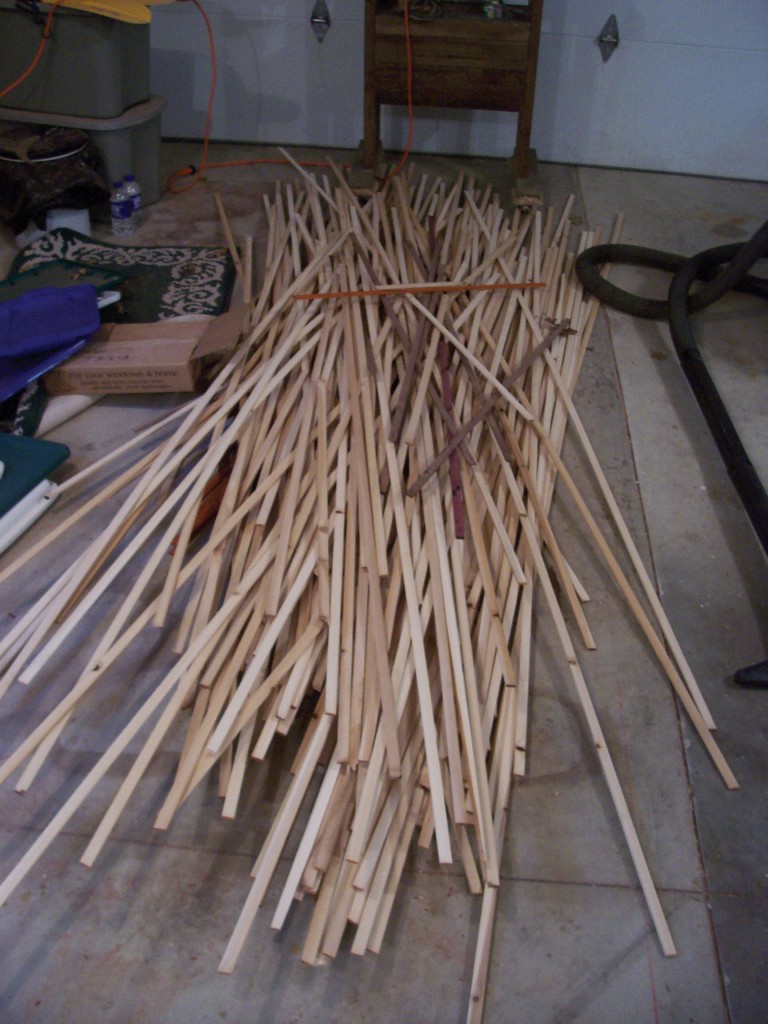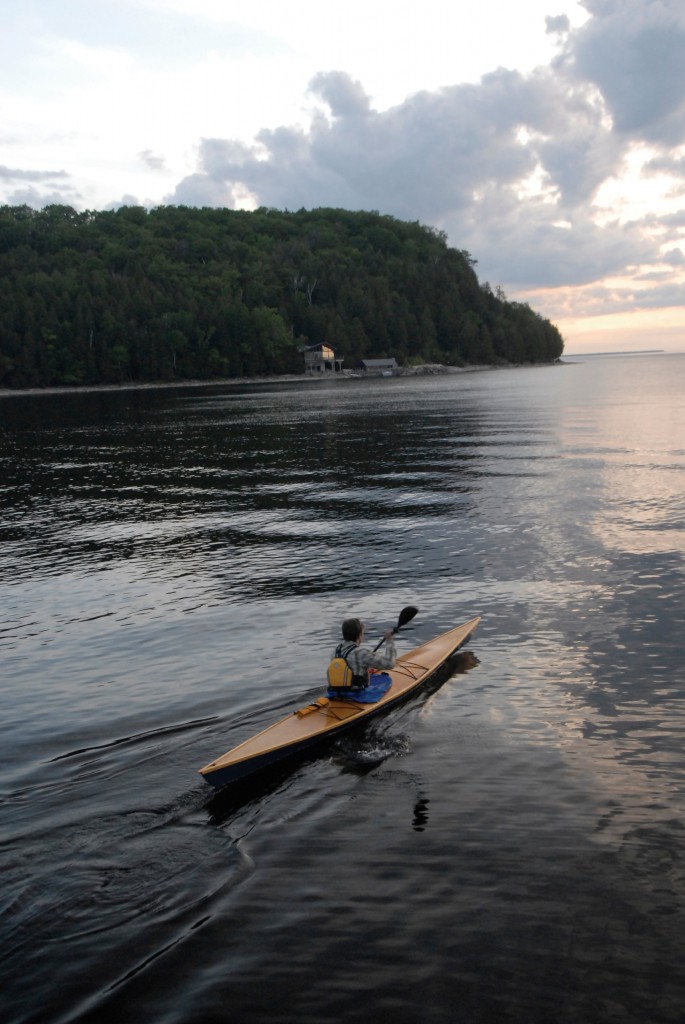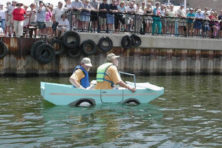Constructing a Boat of Your Own: Building a Wooden Kayak
- Share
- Tweet
- Pin
- Share

Lured by the surrounding waters and serene seascapes of the Door Peninsula, many visitors and residents are taking to the shore in kayaks. For most, a short jaunt in a synthetically constructed rental kayak is enough to whet the appetite; yet, for a select few building and paddling a wooden kayak is beyond compare.
Surprisingly enough, in our technological age of synthetics, wooden boat building is on the rise and nowhere is it growing more than in kayak construction. How convenient, then, that the rock-borne cedars of our piece of the Niagara Escarpment also make suitable construction materials.
Bryon “Fuzzy” Smith of northern Door County is a carpenter and small boat builder. His skills and love of the water have melded in the pursuit of the perfect kayak. Just as the Inuit found seal skin over whale bones to be perfect construction materials, Smith, a Door County native, prefers the lightness and beauty of local cedar. Smith takes a carpenter’s pencil to sketch out details of a kayak mold upon which a boat would be formed. He animates the construction process with his calloused hands, explaining techniques, design and construction history.

From pile of wood… 
to an almost completed kayak by John Morey.
When asked why he would take the painstaking hours to construct a wooden kayak, Smith notes, “You build it for the pride of having a vessel that you’ve created with your own two hands. It can be as simple as you want or as detailed as you want; it’s yours to have for a lifetime.” He also discusses the importance of having a lightweight vessel which becomes a salient attribute when loading, portaging and paddling the kayak. His passion for building has prompted him to expand his workspace, and he is planning on stepping up construction of wooden kayaks for interested paddlers and customers.
This notion of perfection may typically be viewed as an unattainable pursuit, yet the particulars of kayak construction are directly related to the physical attributes and preferences of the paddler. Dave Rack of Door County Kayaks has built a traditional skin boat. He explains the particulars of kayak design by saying, “Originally developed by the Inuit, the design constraints of a perfect kayak include some rudimentary yet important dimensions. The kayak should be as wide as the paddler’s hips plus the width of their two fists. The length of a seagoing kayak should be three times the height of an individual.” Rack experiences the importance of these design constraints daily as he guides paddlers throughout the Door’s waters. Intricacies of kayak design don’t stop there, as modern-day naval architecture melds with ancient principles.

You don’t have to be a professional boat builder to construct a kayak of your own. Designs are available online and through wooden boat journals and magazines. What you would need is a lot of time and patience, an ever-growing inventory of tools, and the room to house and build your kayak. Workshops are available and information for upcoming boat building opportunities can be attained through the Door County Maritime Museum. Sources abound for the woodworking enthusiast. If you are retired, are a seasoned woodworker, or simply have a passion for constructing such a craft, then building your own kayak may be equivalent to the journeys you will take in your finished craft. Regardless of your woodworking skill level, building a wooden kayak will be a journey.
Leif Erickson, also a northern Door County resident, is building his second kayak for a 10-year anniversary gift for his wife, Jennifer. Pulling up to Erickson’s home, his appearance is likened to another Leif Erickson. He stands before a beautifully-constructed wood kayak wearing a Scandinavian sweater, his white beard blowing in the breeze. He launches straight into the description of his high-bowed, oak-veneered kayak. The boat, he says, will head into the breeze with the bow raised and the back section of the boat sweeping into the sea. He points to an old steel tractor seat in the yard, explaining how he used it as a mold for the kayak’s seat. Sure enough, a replica. Erickson has a home-based business compiling family histories on DVD, affording him the convenience of working on this kayak in his basement. When asked how many hours his first kayak took, he simply states: “Too many.” Similar to ship construction, the first boat takes the longest; eventually, the learning curve lessens and efficiency and experience pick up where learning leaves off.

With the second kayak in the mold, Erickson points out the changes he is making to create a lighter boat and a more efficient construction process. He formed his own mold with a purchased design. From this mold he glues four layers of thin veneer, each layer creating additional strength in a multi-directional format. Using a vacuum bagging technique, he covers the boat with a bag and extracts epoxy (glue) with an industrial vacuum into a tube which runs outside of the basement. Ingenuity and precision are on the rise in this small working space. When asked if he could build additional kayaks for customers he quips, “Of course.”
Carl Christianson has made 11 wooden kayaks which he has paddled throughout the Door County shoreline. A coveted commodity, Christianson has sold all but two which he and his wife Kirsten use as escape vessels to the tranquil shore. Christianson has no immediate plans to build another kayak, however. For now, the Great Lakes Yacht Services shipwright plans on enjoying the fruits of his labor. Instead, he has fallen into a smaller, more detailed niche of building custom wooden paddles to accompany the beautiful kayaks that are made here on the peninsula.
Wooden kayak construction is on the rise throughout the peninsula in backyards, sheds, basements and outbuildings. Of course, for the right price, a wooden kayak could be purchased from anywhere. For some, though, having a kayak custom made in the very place they will paddle and create memories may not only be less expensive, but more rewarding as well. Next time you see a wooden kayak, ask the paddler about their journey in both paddling and building the perfect Door County kayak.



